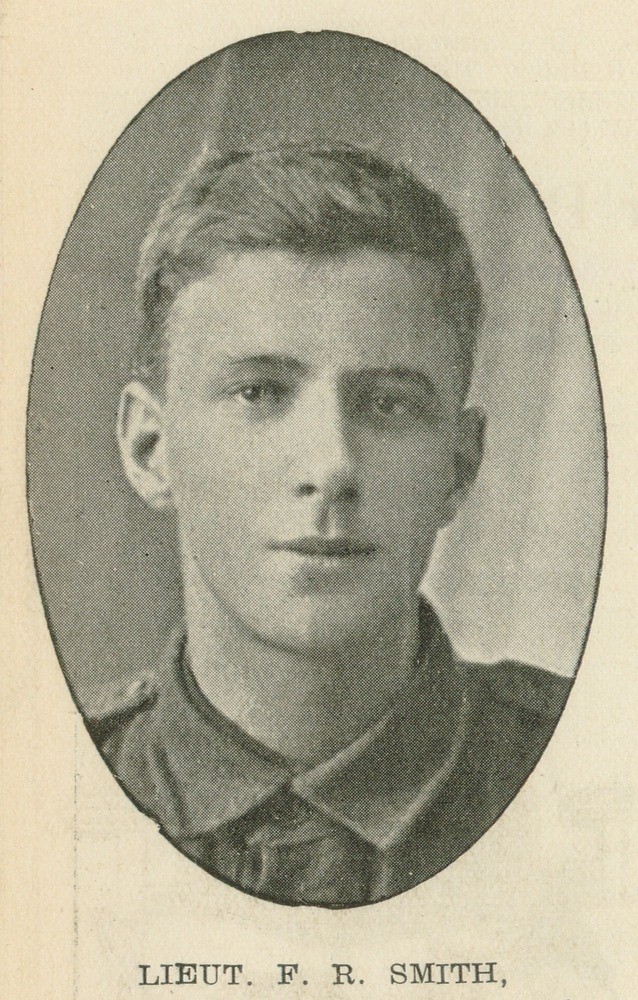
Lieut. F.R. Smith, one of the soldiers photographed in The Queenslander Pictorial supplement 1916.
Armistice Day 1918 plays a pivotal role in the remarkable story of a First World War flying ace, Queensland's Francis Ryan Smith. His short and distinguished service as an infantryman was only matched by his service as a pilot.
On 20 July 1915, 19 year-old Francis enlisted in Brisbane and was assigned to A Company, 31st Infantry Battalion. Born in Toowoomba, he was educated in the Christian Brothers' schools in Toowoomba and Nudgee College, and worked as a clerk at the Royal Bank of Queensland before joining the A.I.F.
While serving in France, Smith was promoted to 2nd Lieutenant on 29 July 1916, but on 13 October 1916 he was wounded at Armentieres, sustaining a severe gunshot wound to his left foot. The injury required treatment in England, and he was transferred to various hospitals then to Perham Downs for convalescence. He gained recognition for his action in the field at Armentieres - leading a raiding party into enemy trenches, and in April 1917 was awarded a Military Cross for his courage and initiative.
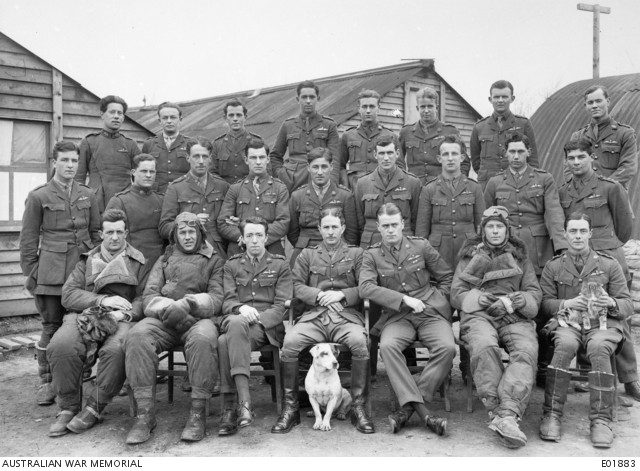
Group portrait of officers of No 2 Squadron, Australian Flying Corps. AWM: E01883. Francis Ryan Smith is seated front row, second from right.
Recovered and ready to rejoin his unit, Smith proceeded back to France in mid-December 1916, and was promoted to full Lieutenant on 17 January 1917, however in August 1917 he requested a transfer to the Australian Flying Corps, and proceeded back to England for flight training. He graduated in December 1917 was appointed a Flying Officer (Pilot), and headed back to France assigned to the 2nd Squadron, Australian Flying Corps. Between May and October 1918 he achieved a string of aerial victories, downing 16 enemy aircraft with a daring and skill that earned him the Distinguished Flying Cross, 1918, having eighteen official German 'planes to his credit, the second greatest number gained by any member of the Australian Flying Corps.
A Flight Leader by mid September 1918, he was promoted Captain and Flight Commander in October 1918, and became his squadron's leading ace. His commendation states:
'This Officer combines high individual enterprise and determination with exceptionally able leadership. These qualities were conspicuous on 14th October, when, leading a patrol of five machines, he saw a formation of twelve Fokker biplanes above him. Relying on the cooperation of another higher formation of Bristol machines, he deliberately manoeuvred his formation into a disadvantageous position in order that our higher patrol might be able to attack the enemy while the latter's attention was concentrated upon destroying his, Lieutenant Smith's formation. The stratagem was entirely successful, with the result that two enemy machines were destroyed and two others were believed to crash. The Fokkers were than reinforced by eight more machines, and in the ensuing combat Lieutenant Smith shot down one in flames, his patrol destroying two others. We suffered no casualties.'
'Commonwealth Gazette' No. 61, 23 May 1919
In addition to his remarkable record, he became the squadron's final casualty. Shot down on 10 November 1918 behind enemy lines, he donned civilian clothing to evade capture, and walked 40 miles back to his squadron mess, where he found his comrades celebrating the announcement of the Armistice.
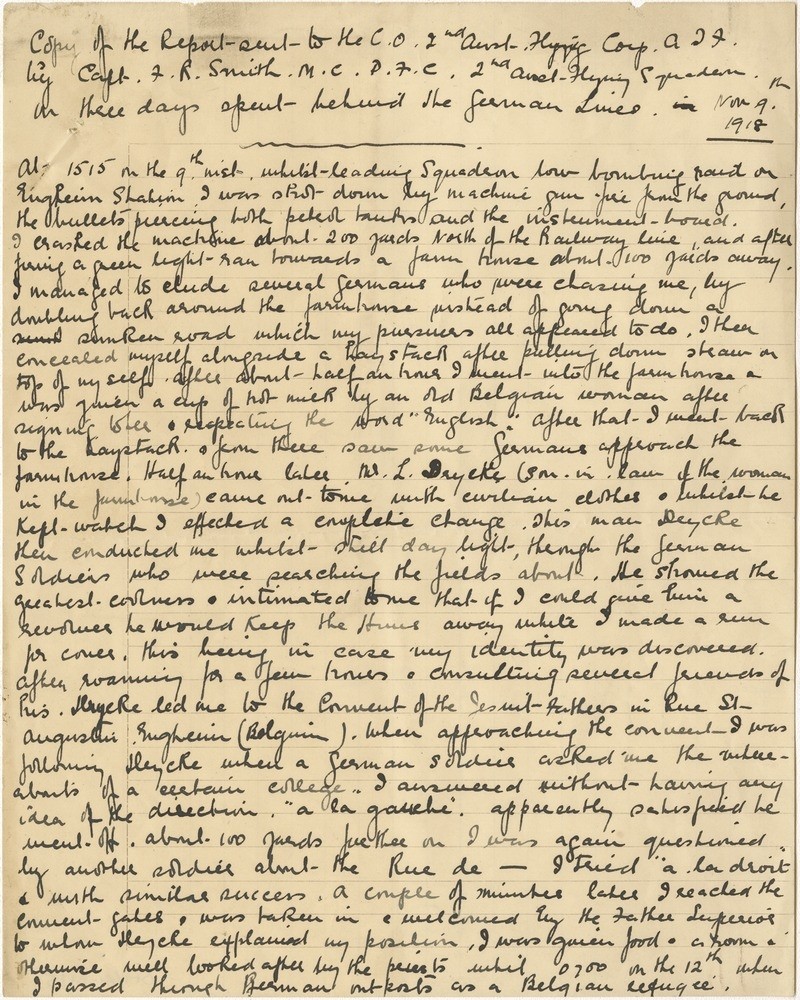
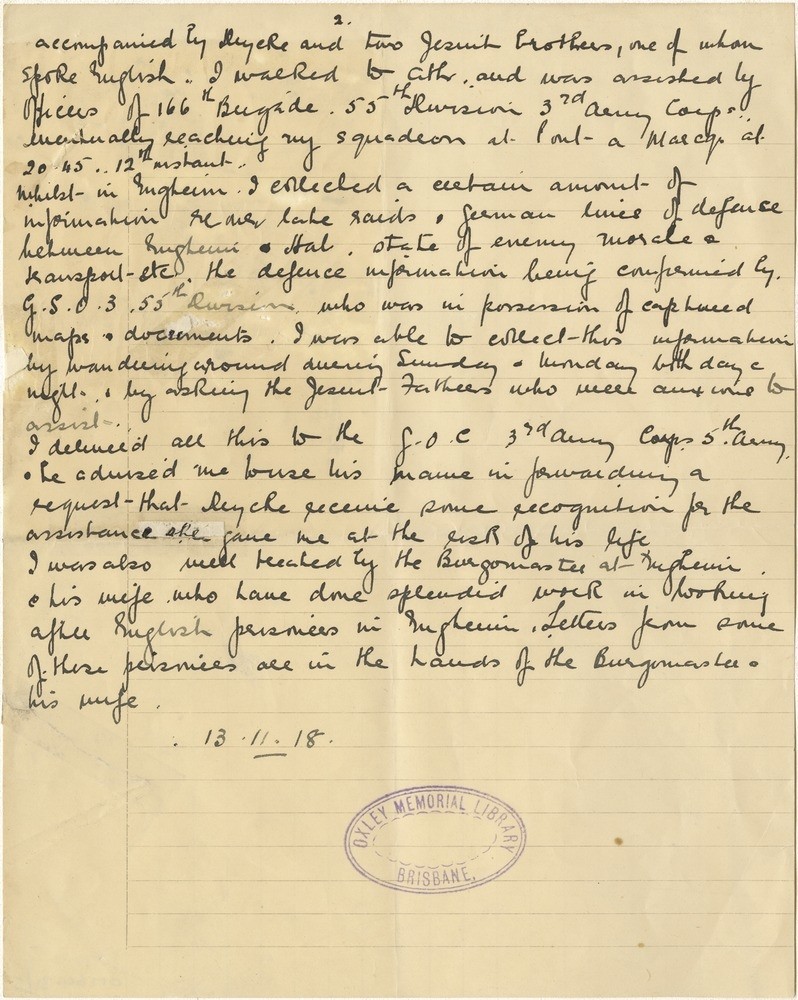
OM64-31/5 Francis Ryan Smith Report 13 Nov 1918, John Oxley Library, State Library of Queensland, p. 2
State Library holds the OM64-31/5 Francis Ryan Smith Report 13 Nov 1918, a copy of a report sent to the Commanding Officer 2nd Australian Flying Corps A.I.F. by Captain F.R. Smith M.C., D.F.C., 2nd. Australian Flying Squadron. The account concerns the three days he spent behind German lines in those last few days of the war. The report is one of our 'mystery' items, as its provenance is unclear. We do not know how many decades it has been part of the John Oxley Library collection, or whether this copy was made by Francis Ryan Smith himself, or by someone else.
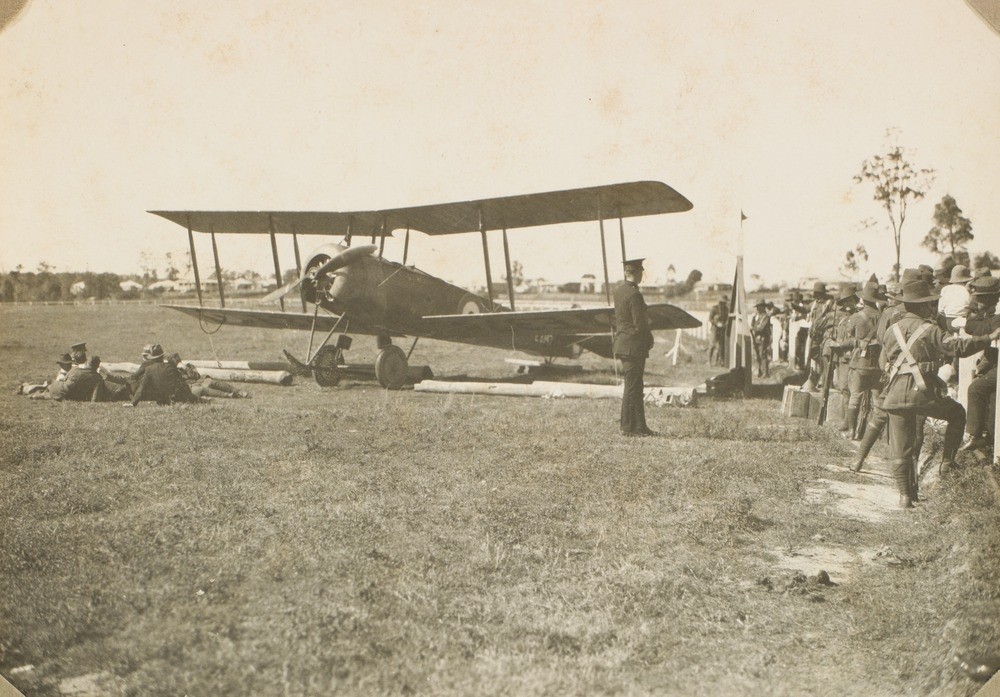
Captain Francis R. Smiths Avro biplane at the Kedron Park Racecourse Kedron Brisbane Queensland September 1919, John Oxley Library, State Library of Queensland, Image: 29917-0001-0006
Francis Ryan Smith returned to Australia on 6 May 1919 and was discharged on 18 June. In September he participated in a flying exhibition in Queensland, which was held to raise money for the Government Peace Loan campaign. He undertook a tertiary engineering course at St Leo’s College, Brisbane, but in 1920 moved to China, where he married his cousin Nancy, raised a family and ran an aviation business. Returning with the family to Australia in 1941, Francis served in the Second World War as an RAAF Squadron Leader, and passed away in 1961.
References
Francis Ryan Smith. Discovering Anzacs.
"Australasian News" The W.A. Record (Perth, WA : 1888 - 1922) 27 September 1919, p.8
Robyn Hamilton - Lead, Collection Building, State Library of Queensland
Comments
Your email address will not be published.
We welcome relevant, respectful comments.